#virtual network simulation
Explore tagged Tumblr posts
Text







The Matrix (1999)
#the matrix#heart of the city#cyberpunk aesthetic#cyberpunk movies#simulation#computer simulation#scifi#virtual reality#computer networking#gifs#gifset#movies#cyberpunk#scifi gif#cyberpunk gif#trinity#movie edit#carrie anne moss#scifi aesthetic#rooftop
455 notes
·
View notes
Text
more stupid musings.
at the start of stayed gone, vox plugs himself into his network of tvs in his surveillance room. at the end of stayed gone, vox is still at that same chair, same room, still plugged in, he doesn't seem to have physically moved from his seat from start to end
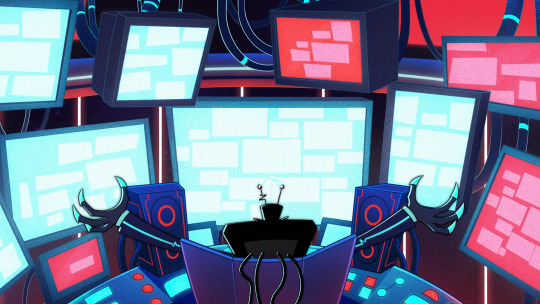

this means from the start of stayed gone until the lost signal, we can assume everything we see of vox in the song is a simulation IN the tv virtual space that he's broadcasting on every screen, it's only him and a shit ton of props and backdrops.
but then we get to this scene

what the hell is going on here. are val and velvette simulated here? or did vox fucking unplug his wires and get up from his seat just to dance across the corridor and do this shit then go back and plug them back in?
#osrs.txt#sorry I'm asking essential questions here#unrelated but I think the hug is kinda cute actually even if vox is losing his god damn mind and the other 2 are annoyed#hazbin vox#hazbin hotel vox#vox#vox hazbin#vox hazbin hotel#the vees#hazbin hotel
502 notes
·
View notes
Text
The Metaverse: A New Frontier in Digital Interaction

The concept of the metaverse has captivated the imagination of technologists, futurists, and businesses alike. Envisioned as a collective virtual shared space, the metaverse merges physical and digital realities, offering immersive experiences and unprecedented opportunities for interaction, commerce, and creativity. This article delves into the metaverse, its potential impact on various sectors, the technologies driving its development, and notable projects shaping this emerging landscape.
What is the Metaverse?
The metaverse is a digital universe that encompasses virtual and augmented reality, providing a persistent, shared, and interactive online environment. In the metaverse, users can create avatars, interact with others, attend virtual events, own virtual property, and engage in economic activities. Unlike traditional online experiences, the metaverse aims to replicate and enhance the real world, offering seamless integration of the physical and digital realms.
Key Components of the Metaverse
Virtual Worlds: Virtual worlds are digital environments where users can explore, interact, and create. Platforms like Decentraland, Sandbox, and VRChat offer expansive virtual spaces where users can build, socialize, and participate in various activities.
Augmented Reality (AR): AR overlays digital information onto the real world, enhancing user experiences through devices like smartphones and AR glasses. Examples include Pokémon GO and AR navigation apps that blend digital content with physical surroundings.
Virtual Reality (VR): VR provides immersive experiences through headsets that transport users to fully digital environments. Companies like Oculus, HTC Vive, and Sony PlayStation VR are leading the way in developing advanced VR hardware and software.
Blockchain Technology: Blockchain plays a crucial role in the metaverse by enabling decentralized ownership, digital scarcity, and secure transactions. NFTs (Non-Fungible Tokens) and cryptocurrencies are integral to the metaverse economy, allowing users to buy, sell, and trade virtual assets.
Digital Economy: The metaverse features a robust digital economy where users can earn, spend, and invest in virtual goods and services. Virtual real estate, digital art, and in-game items are examples of assets that hold real-world value within the metaverse.
Potential Impact of the Metaverse
Social Interaction: The metaverse offers new ways for people to connect and interact, transcending geographical boundaries. Virtual events, social spaces, and collaborative environments provide opportunities for meaningful engagement and community building.
Entertainment and Gaming: The entertainment and gaming industries are poised to benefit significantly from the metaverse. Immersive games, virtual concerts, and interactive storytelling experiences offer new dimensions of engagement and creativity.
Education and Training: The metaverse has the potential to revolutionize education and training by providing immersive, interactive learning environments. Virtual classrooms, simulations, and collaborative projects can enhance educational outcomes and accessibility.
Commerce and Retail: Virtual shopping experiences and digital marketplaces enable businesses to reach global audiences in innovative ways. Brands can create virtual storefronts, offer unique digital products, and engage customers through immersive experiences.
Work and Collaboration: The metaverse can transform the future of work by providing virtual offices, meeting spaces, and collaborative tools. Remote work and global collaboration become more seamless and engaging in a fully digital environment.
Technologies Driving the Metaverse
5G Connectivity: High-speed, low-latency 5G networks are essential for delivering seamless and responsive metaverse experiences. Enhanced connectivity enables real-time interactions and high-quality streaming of immersive content.
Advanced Graphics and Computing: Powerful graphics processing units (GPUs) and cloud computing resources are crucial for rendering detailed virtual environments and supporting large-scale metaverse platforms.
Artificial Intelligence (AI): AI enhances the metaverse by enabling realistic avatars, intelligent virtual assistants, and dynamic content generation. AI-driven algorithms can personalize experiences and optimize virtual interactions.
Wearable Technology: Wearable devices, such as VR headsets, AR glasses, and haptic feedback suits, provide users with immersive and interactive experiences. Advancements in wearable technology are critical for enhancing the metaverse experience.
Notable Metaverse Projects
Decentraland: Decentraland is a decentralized virtual world where users can buy, sell, and develop virtual real estate as NFTs. The platform offers a wide range of experiences, from gaming and socializing to virtual commerce and education.
Sandbox: Sandbox is a virtual world that allows users to create, own, and monetize their gaming experiences using blockchain technology. The platform's user-generated content and virtual real estate model have attracted a vibrant community of creators and players.
Facebook's Meta: Facebook's rebranding to Meta underscores its commitment to building the metaverse. Meta aims to create interconnected virtual spaces for social interaction, work, and entertainment, leveraging its existing social media infrastructure.
Roblox: Roblox is an online platform that enables users to create and play games developed by other users. With its extensive user-generated content and virtual economy, Roblox exemplifies the potential of the metaverse in gaming and social interaction.
Sexy Meme Coin (SEXXXY): Sexy Meme Coin integrates metaverse elements by offering a decentralized marketplace for buying, selling, and trading memes as NFTs. This unique approach combines humor, creativity, and digital ownership, adding a distinct flavor to the metaverse landscape. Learn more about Sexy Meme Coin at Sexy Meme Coin.
The Future of the Metaverse
The metaverse is still in its early stages, but its potential to reshape digital interaction is immense. As technology advances and more industries explore its possibilities, the metaverse is likely to become an integral part of our daily lives. Collaboration between technology providers, content creators, and businesses will drive the development of the metaverse, creating new opportunities for innovation and growth.
Conclusion
The metaverse represents a new frontier in digital interaction, offering immersive and interconnected experiences that bridge the physical and digital worlds. With its potential to transform social interaction, entertainment, education, commerce, and work, the metaverse is poised to revolutionize various aspects of our lives. Notable projects like Decentraland, Sandbox, Meta, Roblox, and Sexy Meme Coin are at the forefront of this transformation, showcasing the diverse possibilities within this emerging digital universe.
For those interested in the playful and innovative side of the metaverse, Sexy Meme Coin offers a unique and entertaining platform. Visit Sexy Meme Coin to explore this exciting project and join the community.
274 notes
·
View notes
Text
Invention to manifest in your reality.
Magic wardrobe
A wardrobe that dresses people. You can draw clothes and they will appear as designer clothes, to your size, exactly as you thought
Crystaliseur
The Crystalizer looks like a round pocket mirror. When you open it, it opens the Crystalizer. It is made of luxury materials with gold and crystal. The Crystalizer is a magical device offered by the school: there is all the necessary information, there are holograms that can come out of it and many applications. Applications in the Crystalizer: The Map of the place, application to talk, Exploration Mode, Personalized Time Schedule, Reminders and Notifications, Priority and Suggestions, The Personal Assistant, Virtual Companion, Story Mode, Communication and Socialization, Holographic Messaging, Holographic Calls, Educational and Creative Games, Care and Well-being, Holographic Interface, Access to Information, Internal Applications, geocalizer, health, journal, Communication Support, Progress Viewer, Journal, Digital Library, Objective Tracking, Magic Calculator, Review Assistant, Career Explorer, Emotion Management, Research Support, Magic Weather, Event Calendar, music, recipe, math, calculator, Encyclopedia of Creatures, Civic Education, label, school social network, Psychological Support, Management of Task, Economics and Management, Astronomical Observatory, Dream Simulation, Sleep and wake-up analysis, Care reminder, photo album, teleportation, Guided meditation, Nutrition monitoring. Celestial map, Hygiene tutorial, Bath assistant, Interactive clock, Success history, etc. It is an electronic device that is in hologram. You can touch the holograms
Gender machine
A machine that can change your gender, if you are really sure
Diagnosty
A device to diagnose, from birth. The device is infallible, confidential. It's free. It is in all hospitals. The baby is placed in the machine and after a few minutes the device is able to diagnose a disorder, disability, disease, etc. Later, the device can diagnose diseases, infections, etc. He can also prescribe a remedy, give instructions, etc.
bookvi
A book in which people can upload images and videos. They can watch them whenever they want. It looks like a normal book
#loa manifestation#law of assumption#shifting#manifestation#law of attraction#imagination creates reality#loa#inspiration#inventions#dream life#manifest your dreams#future#futuristic#law of manifestation#fun things to manifest#manifesation#manifest it#manifesting#master manifestor#random things to manifest series#random things to manifest#things to manifest#dream reality#things to script#Things to scripts#script#reality shifting script#script ideas#scripting ideas#shifting ideas
126 notes
·
View notes
Text
'runners' that are comfortable in their own bodies, can navigate the scrapyards with ease and coordinate assembly for larger bots, procurement of pieces. they're like. betas, in the omegaverse sense. neutral, friendly, helpful, capable. they have autonomy, they have free will and aren't controlled by their bodies.
pilots are intensely dysphoric and desperate to find / build the mech that will house them and feel comfortable and fitting and natural. they have to enlist the help of runners to make that happen. privileged pilots typically go through their assessments, work out the exact mapping of their cortex and ideal form factor, and then are sedated into a medical coma while hired runners assemble the project. disadvantaged pilots will have to endure for extended periods of time, often turning to drug use to numb their feelings during the agonizing wait for an expensive and lengthy assembly.
predators are anti-mech. they are typically violent and sadistic to runners and pilots if they come into contact. runners will typically be ok from this as they're physically capable and experienced in a range of hazardous scenarios, but pilots are often helpless physically and weak-willed to resist whatever the predator wants from them.
there's an ongoing project between members of a digital network to develop technology that will allow pilots who can't afford real mechs to experience a virtual/simulated existence.
#this isn't metaphorical for any kind of real-life experience. wdym :(#this setting assumes like. recreational mech pilotry i guess?#not typical military/corps kind of organization#mine#mechposting#mech pilot#sci fi#worldbuilding#2024/09/08#insp by the post immediately prev from keystrokecascade
25 notes
·
View notes
Text
A-Eye
When light floods into our eyes, it’s the dome-like retina at the back, studded with light-sensitive photoreceptors, that collects the information. Our retinas need a healthy blood supply, and this is disturbed in conditions like macular degeneration. Here generative artificial intelligence helps to design one of hundreds of realistic but virtual retinas – networks of tiny artificial arteries (red) and veins (blue) used to train algorithms to segment (spot patterns) in the web of vessels. Later in the video, researchers use the synthetic retina to simulate the behaviour of fluorescein, a chemical commonly used to highlight issues with circulation around the retina. The fully trained AI eye can now spot patterns and problems in pictures of real retinas and may soon be put to work is hospitals and universities. Such methods could speed up early detection and diagnosis of retinal issues and therefore treatment for patients.
Written by John Ankers
Video from work by Emmeline E. Brown and colleagues
Centre for Computational Medicine, University College London, London, UK
Video originally published with a Creative Commons Attribution 4.0 International (CC BY 4.0)
Published in Nature Communications, August 2024
You can also follow BPoD on Instagram, Twitter and Facebook
#science#biomedicine#biology#neuroscience#eye sight#macular degeneration#artificial intelligence#eyes#retina
20 notes
·
View notes
Text
Black Mirror - Plaything & Creatures
AKA - The real kind of AI I want to see in videogames
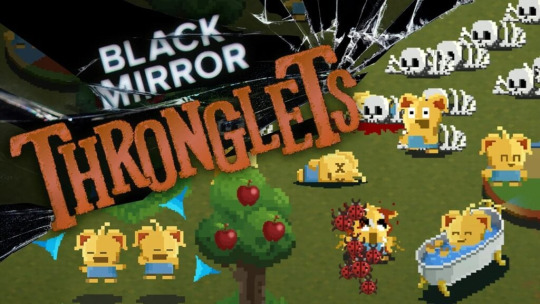
Season 7 of Black Mirror has come out and, surprisingly, I've found a very personal reference in one of the episodes "Plaything" with Peter Capaldi. The game central to the plot really gives me flashbacks to a truly remarkable game I played as a quirky, lonely, kid.
This gives me an excuse to write a whole essay on one of my favourite games which only 5 people will read. It's still worth it. If you watched this episode, and want to learn a small portion of 1990s gaming history knowledge, read on!
In the episode, an introverted game reviewer in the 90s gets tasked with reviewing a game by a genius designer, with a troubled pasts, which attempts to replicate virtual life. A new kind of game, which isn't about conflict or "winning", but which focusses on caring and nurturing virtual life.

The instant this was brought up by Collin, the game designer, I knew this would be my favourite episode of the season. As a video game player I did enjoy shooter games to some extent, but I always much preferred creative, or strategy, games such as Theme Hospital, Black & White, Pharoah and others. But this game instantly reminded me of one of my all time favourite games.
Thronglets, the in-episode game, is likely heavily inspired by the 90s obsession with artificial life and games such as the creatures series created by eccentric, and brilliant, computer scientist Steve Grand.
How remarkable is this game? Isn't it just some basic Tamagotchi style game?
Oh boy would you be wrong! Let's dig in to one of my major hyperfixations from age 7 onwards.
Steve Grand - What Doth Life?

Tamagotchi's were a popular craze in the 90s, but creatures is on a whole different level. Tamagotchis, being a kind of virtual life, relied on you interacting with them using various buttons to simulate giving food, playing or petting them etc. Fun for some (except when you left on holiday for a week and they all DIED) but limited.
Creatures, however, is a very different beast.
The AI models you see today? Computer scientist and AI researcher Steve Grand created very basic versions of neural networks in order to simulate intelligence and learning for his creatures! Unlike modern AI grad students, who have the benefit of standardised hardware and software libraries, Steve instead created this system which worked on Windows 95 computers. Quite the achievement.
It's more remarkable when you realise you could have 10's of creatures in the same world interacting at the same time on this era of hardware.
These simulated life forms were called Norns. They could actually learn, in a rudimentary way, using input from their environment and input from the person running the game. Players weren't entirely passive, as you could pet or slap the norms to reward/punish them for actions as well as interact with objects within the 2D game world.
There is an excellent video explainer for this system which can be found here:
youtube
Not only did Steve Grand do this, he simulated entire biochemical systems for the creatures as well. Not only did it simulate things such as hormones, ATP and insulin but also a number of illnesses and toxins.
Creatures could get illnesses, which you would need to treat. Spend too long in the swamp area? You might get heavy metal poisoning or some horrible bacterial infection.
It would also affect their drives. Too little glucose, and a creature ran the risk of dying. A nice slice of cheese, or some berries, helps to boost energy and keep your norns happy and healthy.

Not only were neural networks, and simulated biochemistry, involved but you could also breed and raise new norns. The genetics system in the game would also influence various inherited biochemical behaviours, but also some of the neural structure as well!
There are STILL communities who breed norns to this day. There is a genre of online game which does use this kind of mechanic, which does remain popular to this day so at least part of Creatures survives on in this form.
Did I also mention that you could SPEAK to them? I still boot up this game on occasion and interact with some of my favourite norns. Obviously, given the hardware and software of the day, the speech is limited to a small vocabulary, but for a 1990's game this was truly incredible.
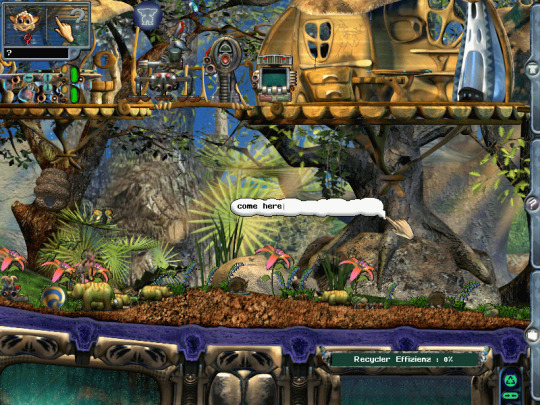
The Dangers of Too "Realistic" Simulation
Obviously, Black Mirror is a show, in part, telling stories around the dangers of technology. I did like the episode itself, considering the implications of having a significantly more advance simulated life AI observing (and viscerally experiencing) the worst of human behaviour, and what that might motivate it to do and there is ambiguity to what that might indeed be at the end of the episode.

I do think it's important to also discuss how people interact with AI systems in times when social isolation is increasing. The main character in Plaything is drawn to the in-game Thronglets because they offer him a safe non-judgemental social space which he has never experienced before in his life. There are plenty of examples of current AI chatbots who people do interact with in lieu of actual people, perhaps for similar reasons. The cost of living driving up costs, and increasing indirect hostility of business and governments to "third spaces" like parks, bars, libraries and other spaces, also doesn't help the young of today to socialise in person like they did in the past.
It is quite dangerous, then, to have people perhaps too emotionally dependent on software systems which, bluntly, are controlled and owned by large corporations and which can be trained, or altered, with certain viewpoints in mind.
“What I had not realized is that extremely short exposures to a relatively simple computer program could induce powerful delusional thinking in quite normal people.” ― Joseph Weizenbaum on ELIZA, the first chat-bot
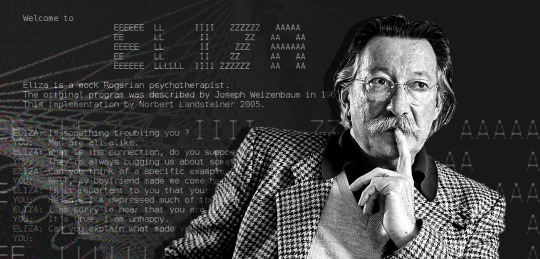
Will we live to see such times again?
I miss the creatures games, and the fusion of scientific and creative energy that made it possible in the 1990s gaming environment. Can this kind of thing happen again?
Frankly, Creatures was very much a fluke of a game, created by an AI researcher to show the possibilities of technology to emulate life. I love it to bits, but it's highly unlikely anyone will create anything like it again given current profit motives and linear-mindedness of game design which railroads design into fairly discrete categories. Not necessarily a bad thing, per say, but something that limits the imagination.
The closest I've gotten to seeing similar complexity is with Trico in The Last Guardian, but Trico pales in comparison to the complexity of Steve Grand's creations. Team ICO's intentions to build a relationship with a simulated creature, however, were well served by their approach and the lack of complexity makes it no less impressive. I do wonder, however, what simulated life games could achieve with today's AI systems and technologies. My scratched up Creatures 2 CD ran on Windows 95 computers back in the 1990s. Imagine a similar game released today, taking advantage of all the advancements in software design and research we've had since then and what that could be like....
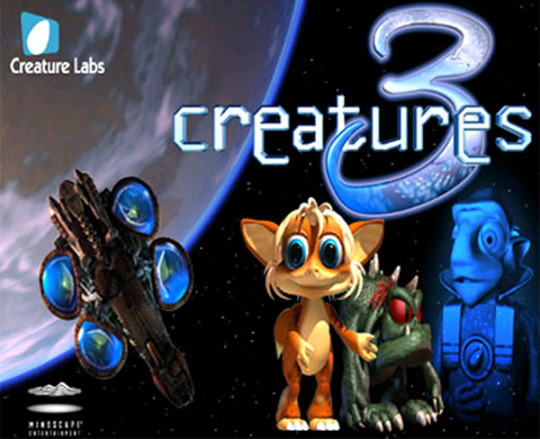
I can only dream of electric sheep...
#dark mirror#thronglets#creatures#creatures 2#creatures 3#steve grand#ai#artificial intelligence#video games#video game#video game history#creature labs#cyberlife#Youtube#black mirror#black mirror season 7#bandersnatch
12 notes
·
View notes
Text
Which of the following is the most ethical?
MOON PRISON - Inmates are kept in an isolated facility on the Moon. Books, movies, and other materials may be made available, but there is only very limited network access. In each room there is a 3D screen which shows the view of Earth from cameras outside the facility, but aside from an atrium, the vast majority of the facility is beneath the surface to protect it from asteroid impacts. Food and a limited amount of replacement parts are produced on-site.
CYBER PRISON - Inmates are placed into life-sustaining pods, and then connected to a full immersion virtual reality simulation similar to The Matrix. This allows inmates to experience running freely in an open-world environment without putting ordinary citizens at risk, although the environment is somewhat lower-fidelity than real life. The facility is located on Earth in a remote part of Iowa. It is intended that the network is isolated. In the event of an emergency, inmates will be ejected from the pods.
CRYO PRISON - Inmates are stored in a state of suspended animation for the duration of their sentence. The technology is highly reliable, with few side effects. Inmates will be the same biological age at the end of their sentence as when their sentence started. In the event of an emergency, backup systems in each unit will attempt to safely bring the inmate out of cryostasis. With no food, active life support, or VR server farms, this is the cheapest option.
Feel free to provide your reasoning in the reblogs.
236 notes
·
View notes
Text
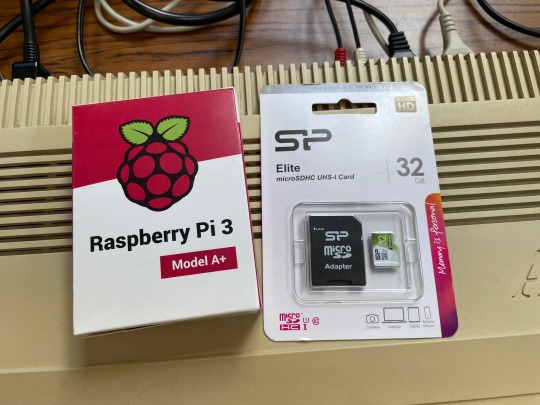
I've been waiting years to get my hands on a Raspberry Pi 3 Model A+ so that I can try the PiStorm project in my Amiga 500
If you're not familiar, it allows for the Motorola 68000 CPU of an Amiga to be replaced with a Raspberry Pi that in turn emulates the original CPU in software.

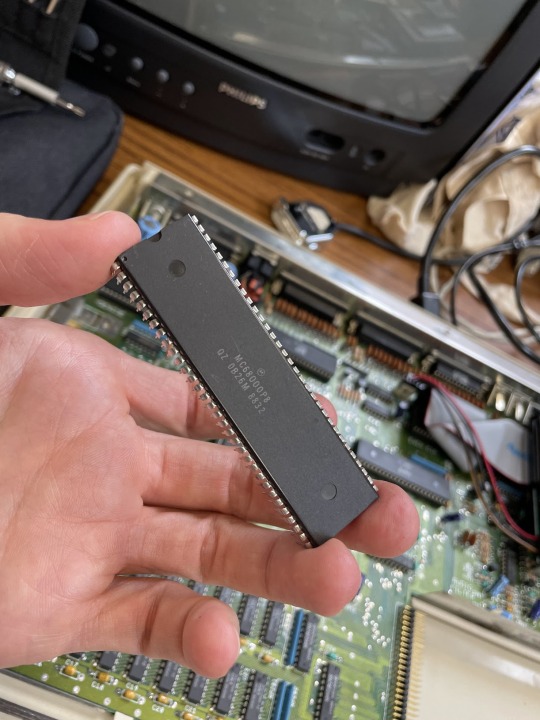
At a basic level this lets you upgrade the performance of the Amiga, as it's possible to run at much faster speeds than the original CPU. Very useful
However that's only the start of the feature set. You can also simulate additional memory, hard drive support, retargetable graphics (to output via the Pi's HDMI port), networking support, upgrading the native Kickstart ROM and more.
Essentially as the CPU socket has access to all the components of the Amiga, it has the capability to override and replace any of these native chips.
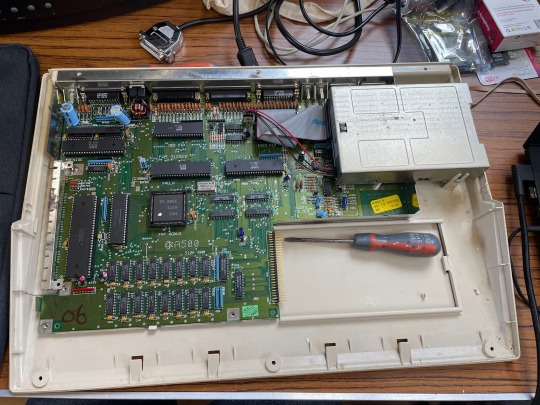
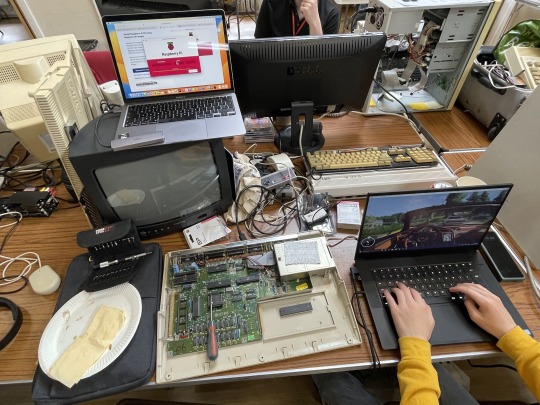
What better excuse and environment to perform the upgrade than the September 2023 SWAG meet up.
After cracking open my A500 for the first time I gently unseated the 68000 from it's socket and prepared to install the PiStorm. It was only then I realised I'd forgotten to bring the vital component, a small board that allows the Pi to connect to the 68000 socket! Oh well, an excuse to play some games instead!
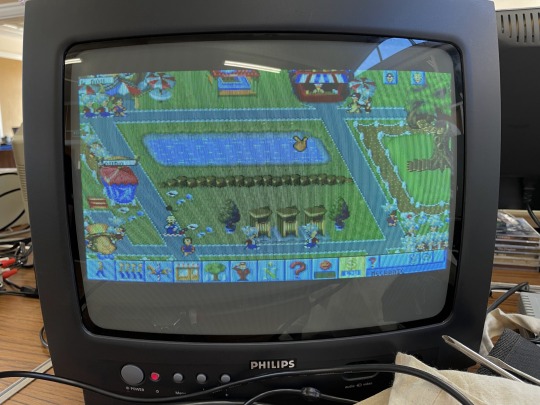
Once I was back in my workshop at home I decided to finish the job. Thankfully with all the correct hardware at hand it was a quick and easy task to get it up and running.
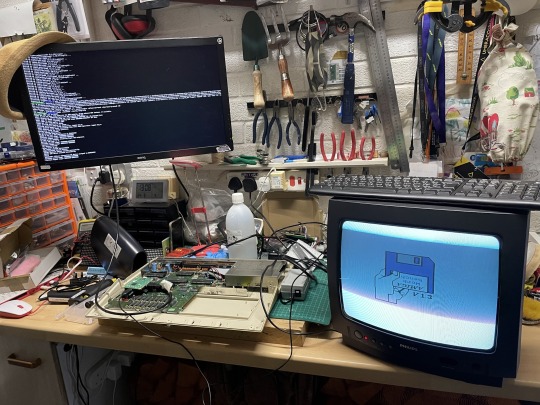
It was certainly quite a nice feeling the first time I started the emulator on the Pi and was rewarded by similar the familiar Kickstart 1.3 appear on the CRT monitor connected to the Amiga.
Seeing old and new hardware work in tandem always gives me a buzz
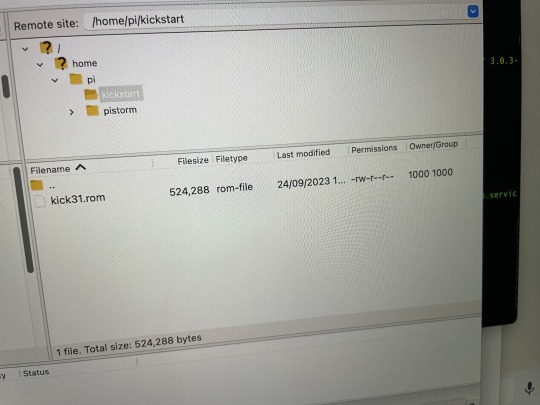

Finally I setup an FTP server on the Pi that enabled me to easily copy across a newer Kickstart version. After restarting the emulator on the Pi suddenly my A500 felt a lot newer.
Next on my list, to setup a virtual hard drive filled with classic games
90 notes
·
View notes
Text
Shui Long Yin VR Metaverse: Technologies and Digital Assets, and the melon about it being released in Summer 2025

What is the metaverse?
The Shui Long Yin metaverse is a parallel world closely resembling the real world, built through the use of digital modelling and technologies such as VR and AR, and designed to exist permanently.
This virtual realm integrates cutting-edge advancements, including blockchain, augmented reality, 5G, big data, artificial intelligence, and 3D engines.
When you acquire a ticket to this world, you gain a digital asset, allowing you to become an immersive citizen within the Shui Long Yin Metaverse.
Every item within Shui Long Yin can be experienced through Augmented Reality using VR devices, providing a seamless blend of the physical and digital realms. These digital assets are permanent, and in some cases, overseas users may trade or transfer their tickets to enter the Shui Long Yin world.
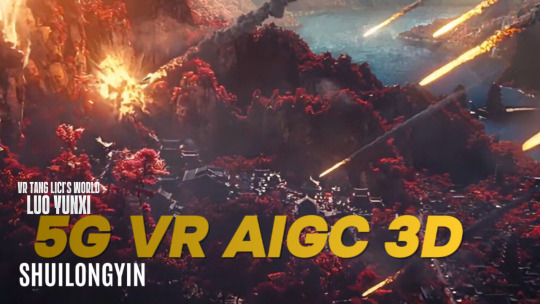
What is VR and AR?
Virtual Reality (VR) is a technology that enables users to interact within a computer-simulated environment.
Augmented Reality (AR), on the other hand, combines elements of VR by merging the real world with computer-generated simulations. A well-known example of AR is the popular game Pokémon Go, where virtual objects are integrated into real-world surroundings.

Tang LiCi's universe
The Shui Long Yin film crew has digitally modeled the core art assets, 50 000 square meters.

What technologies does China Mobile & Migu bring to the table?
China Mobile served as the lead organizer for the 2023 World VR Industry Conference. Its subsidiary, Migu, has also been dedicated to advancing projects in this area.
Shui Long Yin is their first priority this summer 2025.
5G+AI: VR world in Metaverse
AIGC AR 3D: Using AI technology in graphics computer, with the best trained AI system in China.
Video ringtones as a globally pioneering service introduced by China Mobile.
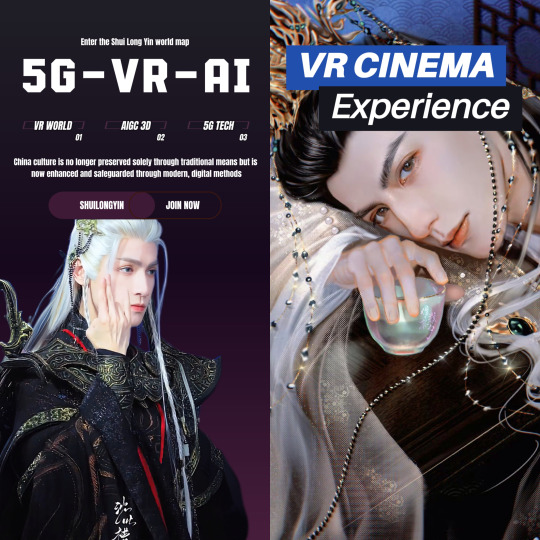
Shui Long Yin from Screen to Metaverse to Real Life: Epic Battles and Intricate Plotlines
The United States and China are world pioneers in the development of TV drama integration VR Metaverse. Notably, Shui Long Yin is the sixth TV drama map worldwide to be merged into the Metaverse.
How can we enjoy these technologies?
-- First we need 5G -- According to a report by the Global Mobile Suppliers Association (GSA), by June 2022:
》There are 70 countries around the world had active 5G networks, you can fully experience all the technology featured in Shui Long Yin.
Example: South Korea, China, and the United States have been at the forefront. Follow after are Japan, United Kingdom, Switzerland, Australia, Taiwan, United Arab Emirates, Saudi Arabia, Viet Nam...
》No worries—even in countries without 5G, you can still watch the drama and enjoy AIGC and 3D technology through the streaming platforms Migu Video and Mango.
•Mango available on IOS and Android, Harmony OS
•Migu (Mobile HD) soon availabe on IOS and Android, Harmony OS
-- Second, we need VR devices --
In country where VR is already commonplace, such as the United States, owning a VR device is considered entirely normal. Users can select devices that best suit their preferred forms of home entertainment.
European countries have also become fairly familiar with VR technology.
However, it is still relatively new to many parts of Asia. When choosing a VR device, it’s important to select one that is most compatible with your intended activities, whether that’s gaming, watching movies, or working.

It's no surprise to us that the drama Shui Long Yin will be released in the summer 2025, but it will also be coinciding with offline tourism to Long Yin Town in Chengdu, online VR Metaverse travel, and 3D experiences on the new streaming platforms Migu and Mango. Stay tuned!
Tv drama: SHUI LONG YIN Shui Long Yin & Leo All music and image are copyrighted and belong to the respective owners, included the official film crew SHUILONGYIN.
#shui long yin#tang lici#水龙吟#唐俪辞#luo yunxi#luo yun xi#leo luo#罗云熙#cdrama#chinese drama#long yin town#long yin town vr
5 notes
·
View notes
Text
FREEDOM – Virtuality and Ideals/Chapter 5
Previous chapter
<An evening one week later. In the real world, Trickstudio>
Subaru: Oh. Anzu’s here! Otsukaresama¹~
Subaru: Come over here. Come laze around with us☆
Subaru: ...Huh? Work first, fun later? Oh, right. We were supposed to have a review meeting about FREEDOM.
Hokuto: Don’t tell me that you forgot.
Subaru: I remembered, but when I saw Anzu, I got so happy it slipped my mind♪

Mao: I’m glad to see her too, but isn’t that getting a bit too excited?
Mao: We’ve been seeing quite a lot of her since we started hanging out in Trickstudio regularly, don’t you think?
Subaru: You just don’t get it, Sari~. Any time you see someone you love a who~le lot is a time to be happy.
Subaru: Anzu, what’s up? ...Oh, you wanna hear about FREEDOM’s current status while we wait for Ukki~?
Hokuto: We can tell you that, but you have administrator privileges, so can’t you just check the data directly?
Hokuto: ...Fumu. You want us to be able to build freely without any worries, so you only log in when there’s an error?
Subaru: You don’t need to hold yourself back, though. You’re welcome at any time☆
Subaru: But thanks for being considerate, anyway. The current status, huh…?
Subaru: Oh, right. Our four avatars finally formed a unit~♪
Subaru: Out of their own initiative, of course. We’re Trickstar, after all☆
Hokuto: Yes. Putting the surrounding circumstances aside for a moment, I can’t help but be impressed at the realism.
Mao: Yeah, and their actions since they formed a unit have been reminiscent of ours as well. Subaru and Hokuto’s avatars have been jumping the gun, holding live performances in all sorts of places…
Mao: ...but my and Makoto’s avatars have been putting effort into city building and helping out citizens, instead of focusing purely on idol activities.
Mao: It kinda reminds me of the time when we just formed Trickstar♪
<Flashback. Five days earlier, in the information room>
Makoto: (FREEDOM is our first job of the fiscal year, so the agency must have high expectations too.)
Makoto: (In order to get good results, we first need to focus on building the city. This is my strong suit, so I’ve gotta give it my all!)
Makoto: (I’m following the plan I drafted using my experience with previous simulation games I’ve played…)
Makoto: (...but it’s pretty hard to balance it with those idol activities. A lot of things don’t turn out like I want them to.)
Makoto: (The fact that it’s not just about city building is what makes this game so interesting, but it also complicates things, so I’m having a hard time.)
Makoto: (I feel like I’m doing exactly what I should be doing, but the results don’t reflect that. Hrm…)
Makoto: (An online strategy guide would… not exist yet. Of course it wouldn’t. The game isn’t out yet, after all.)
Makoto: (I could still give looking it up on our internal network a shot. Although I really doubt I’ll find anything♪)
Makoto: (...Huh? I got a hit.)
Makoto: (“City Building Plans ‘FREEDOM’. Documentation for internal use.” ...Some of this information wasn’t in the documents we were given.)
Makoto: (Actually, it seems like I’ve stumbled upon some pretty significant information?)
Makoto: (…)
Makoto: (“Choosing idols and having them freely construct a city, using the software we developed in cooperation with this game company.”)
Makoto: (“If they are successful, that virtual city will then be built in reality”...)
Makoto: I already thought that it was strange that this job only consisted of playing a game. So that’s the plan.
Makoto: The reason why they’re letting us build this city however we want is still a mystery to me, but I never thought our city would become real…
Makoto: Actually, that’s a huge issue!
Makoto: The four of us have just been building our own versions of an ideal city, but it would by no means be an ideal city in reality!
Makoto: It’s overrun by dinosaurs and full of factories, with the occasional zombie outbreak and a theme park that’s without power most of the time. We can’t let them build that in real life!
Makoto: There’s a high chance that they would just cancel the whole thing, but I don’t want to let our first job of the year end in failure either.
Makoto: I’ll just have to correct our course, and turn it into a city we can be proud of…!
<Several days later. The dormitory, Makoto’s room>
Makoto: (…)

Makoto: (...Oof. How many all-nighters have I pulled now? I’ve lost count.)
Makoto: (By overhauling the factory area, I’ve increased the factories’ energy consumption, but now they’re less destructive to the environment.)
Makoto: (And I tore down all of the city in order to fix the infrastructure. I’ve widened the roads and improved traffic flow…)
Makoto: (I’ve built more parks, improving the citizens’ living conditions. The ambiance in the city should be much better now, but…)
Makoto: (It’s nowhere near ideal. There’s just not enough time.)
Makoto: (I feel like the career system... or rather, the idol activities that are being organized because of it are getting in the way of the development of the city.)
Makoto: (When they’re called upon, the avatars automatically start prioritizing idol activities.)
Makoto: (Their training takes up a lot of time, and when people gather for concerts, they end up leaving a big mess in the city...)
Makoto: …
Makoto: Maybe I should make the avatar ‘me’ leave Trickstar.
Makoto: I feel like their idol activities wouldn’t really change, even if ‘I’ wasn’t there. I’m sure ‘I’ would have more to contribute in terms of city building.
Makoto: The others might be a little disappointed, but I feel like this is the better option…
Makoto: But my eyelids feel so heavy… I can’t……
TL notes:
This is a standard expression used when greeting someone who has been working.
Translated by me, proofread by Altea (@icaruswasthesun on Twitter)
Next chapter
#ensemble stars#story translation#mao isara#makoto yuuki#subaru akehoshi#hokuto hidaka#trickstar#anzu
17 notes
·
View notes
Text




The Matrix (1999)
#the matrix#cyberpunk aesthetic#cyberpunk movies#simulation#computer simulation#scifi#virtual reality#computer networking#gifs#gifset#movies#cyberpunk#scifi gif#cyberpunk gif#trinity#movie edit#carrie anne moss#scifi aesthetic#rooftop#keanu reeves
645 notes
·
View notes
Text
Alien story idea I've been toying with...
I shared this on my Patreon discord but wanted to share it here too :)

I’ve been thinking about a mid-size space station, nothing special about it. Maybe it’s a relay station or a way station or some kind of mediocre, not-highly-military-or-science place. Anyway, all the space stations have a kind of virtual reality plug-in network thing, where you can talk to others but they don’t know what species you are and you don’t have an avatar or anything. It’s just voices. Not entirely sure how it would work or what it would look/feel like.
But anyway. There’s this species of alien that’s kind of looked down on by others because they’re known for being very aggressive and warlike and kinda shitty, especially on their home world, but obviously not all of them. They’re also kinda freaky looking, with angler-fish/deep sea vibes, going on - pointy teeth, big eyes, chitin, danger bois (gn) - so most people find them repulsive or frightening, particularly humans. (Inspired by Mass Effect's vorcha)
Our human plugs in one day just to chill out after work (working in the refectory or something) and they get talking to someone who they really gel with. They log on again and again and talk and share music, and the human talks about earth and describes it and shows their friend videos and simulations of their favourite places but their friend never reciprocates, saying they don’t have anything like that worth sharing.
Human overhears a fellow human talking about that ‘freaky deep sea fucker in engineering’ and thinks it’s shitty to talk like that about someone but doesn’t follow up, and that night when they clock off and plug in, their friend is really low.
Long story short, they fall in love without ever seeing each other. Alien boy rejects the idea of meeting in person on the space station and freaks out, and isn’t online for a week or so. They reconnect and move past it, but finally, after a lot of persuasion, he agrees to meet up with the human. He does warn them beforehand and they’re like… that's why you wouldn’t meet??? Because that’s not a problem for me… 👀
66 notes
·
View notes
Note
So I’m trying to come up with an acronym for VRN’s name. Like
Networking Operator Ordered Graphics Artifical Intelligence
Or, N.O.O.G.A.I. For short. Perhaps Noogai decided to give itself an acronym to sound more important, or Nala gave it too it? Idk.
For VRN, we could use Virtual Reality Network. I mean it might be a God but it is still technically an AI, and AI’s operate on rules mainly.
Like for instance, it might break up its existence into chunks, like Pre-Alpha, Alpha, and Beta. It would probably also follow the rules of the game, and coded laws that our buddy above implemented for the game. It might also have ‘commands’ that players could give it. It would also refer to things differently than we do. Like a body to it would be a ‘model’ since that’s what it is. It would also probably be able to think in microseconds, due to processing power.
Another problem would be rendering. So many people, players everywhere, constantly having to render the entire world at once. Usually, it would stop simulating parts of the world, and turn off some NPC’s until players found their way to the area, but the players are stuck inside, so it needs a workaround.
I also imagine it could send notes to the devs, like things it noticed, bugs, glitches, flaws in its own systems. It is also a language model, which is probably a lot more advanced then the ones we have now.
For reference, ChatGPT isn’t true AI, it is a language model, and when a language model feeds off of AI data, it slowly degrades until eventually it’s just gibberish, so it needs to run off of human inputs, instead of just its own. I also imagine inside its tree, it can also test things, like NPC ai, rendering, 3d modeling, bugs, things it noticed.
Plus, I also assume you’d have to talk to it very, very literally, no hinting at things or trying to get it to understand hidden meanings. Because language models usually takes things at face value. Plus, another problem is language models are usually all over the place, bouncing between a ton of topics at once, so VRN might have a (off topic, rerouting) sort of thing, to keep it on task.
Sorry for the long thing, I just love the idea of AI, and how fundamentally different it would be, and how it would work. How it would perceive things, fix code, etc. I have a lot of rants I could go on about this kind of stuff, but I’ll hold off lol. In conclusion, you are cool.
Wow! That is a lot o O but really interesting!! Honestly, a lot of that would be interesting- although for VRN, while that would be true in the sense of it stop simulating the world before it was more... alive, it no longer really needs to do that. Things that should take more processing power take a lot less.
That isn't to say it wouldn't still follow a lot of these things! Like calling bodies models, it would do that! And refer to other things differently.
However while it would have needed more human input before, it also needs less now. And players... can give it 'commands' but not commands. Such as a player acting in one way, doing something, causes a ripple, and that acts as a 'command' to cause a change to VRN, basically.
But yeah! All very interesting ;3
and thank you.. ;-:
8 notes
·
View notes
Text
Mirror neurons
Mirror neurons, a captivating aspect of neuroscience, are specialized cells with multifaceted functions that significantly influence our social interactions, learning processes, and empathetic responses. These neurons operate on a fascinating physiological basis, contributing to our ability to understand, imitate, and connect with others on a profound level.
At the core of their functionality, mirror neurons exhibit a unique mirroring mechanism, firing not only when we perform a specific action but also when we observe someone else carrying out the same action. This dual activation is pivotal for the process of imitation, enabling us to learn new skills by visually absorbing and replicating behaviors demonstrated by others. Through this mechanism, mirror neurons facilitate a rapid and efficient way for individuals to acquire new knowledge and abilities from their social environment.
Empathy, a fundamental component of human interaction, is another realm where mirror neurons play a crucial role. When we witness the emotions and experiences of others, mirror neurons fire, allowing us to share in their emotional states. This shared emotional experience forms the foundation of empathy, fostering a deeper understanding of the feelings and perspectives of those around us. Consequently, mirror neurons enhance our capacity for compassion and connection, strengthening social bonds and cooperation.
Moreover, mirror neurons contribute significantly to understanding the intentions of others. By simulating observed actions in our own neural circuits, these neurons help decipher the purpose behind behaviors, ultimately enhancing our ability to interpret and respond appropriately in social situations. This nuanced understanding of intentions fosters effective communication and collaboration within social groups.
Physiologically, the activation of mirror neurons occurs in the brain's motor areas, specifically the premotor cortex and the inferior parietal cortex. This neural activity creates a virtual simulation of the observed action, effectively imprinting the experience in our neural networks. This physiological mechanism not only aids in learning and imitation but also forms the neural basis for the development of complex behaviors and skills through observational learning.
In essence, mirror neurons stand as neural architects of social cognition, influencing our capacity for learning, empathy, and interpersonal understanding. By unraveling the intricacies of these remarkable cells, we gain profound insights into the neural underpinnings of human social behavior and the interconnected nature of our minds.
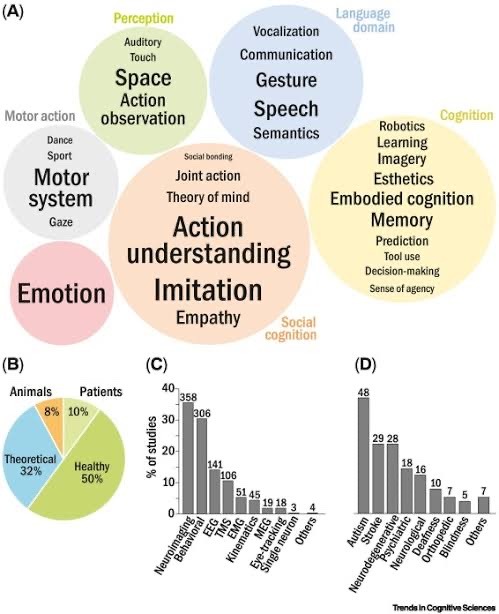
32 notes
·
View notes
Text
The AI Revolution: Understanding, Harnessing, and Navigating the Future
What is AI
In a world increasingly shaped by technology, one term stands out above the rest, capturing both our imagination and, at times, our apprehension: Artificial Intelligence. From science fiction dreams to tangible realities, AI is no longer a distant concept but an omnipresent force, subtly (and sometimes not-so-subtly) reshaping industries, transforming daily life, and fundamentally altering our perception of what's possible.
But what exactly is AI? Is it a benevolent helper, a job-stealing machine, or something else entirely? The truth, as always, is far more nuanced. At its core, Artificial Intelligence refers to the simulation of human intelligence processes by machines, especially computer systems. These processes include learning (the acquisition of information and rules for using the information), reasoning (using rules to reach approximate or definite conclusions), and self-correction. What makes modern AI so captivating is its ability to learn from data, identify patterns, and make predictions or decisions with increasing autonomy.
The journey of AI has been a fascinating one, marked by cycles of hype and disillusionment. Early pioneers in the mid-20th century envisioned intelligent machines that could converse and reason. While those early ambitions proved difficult to achieve with the technology of the time, the seeds of AI were sown. The 21st century, however, has witnessed an explosion of progress, fueled by advancements in computing power, the availability of massive datasets, and breakthroughs in machine learning algorithms, particularly deep learning. This has led to the "AI Spring" we are currently experiencing.
The Landscape of AI: More Than Just Robots
When many people think of AI, images of humanoid robots often come to mind. While robotics is certainly a fascinating branch of AI, the field is far broader and more diverse than just mechanical beings. Here are some key areas where AI is making significant strides:
Machine Learning (ML): This is the engine driving much of the current AI revolution. ML algorithms learn from data without being explicitly programmed. Think of recommendation systems on streaming platforms, fraud detection in banking, or personalized advertisements – these are all powered by ML.
Deep Learning (DL): A subset of machine learning inspired by the structure and function of the human brain's neural networks. Deep learning has been instrumental in breakthroughs in image recognition, natural language processing, and speech recognition. The facial recognition on your smartphone or the impressive capabilities of large language models like the one you're currently interacting with are prime examples.
Natural Language Processing (NLP): This field focuses on enabling computers to understand, interpret, and generate human language. From language translation apps to chatbots that provide customer service, NLP is bridging the communication gap between humans and machines.
Computer Vision: This area allows computers to "see" and interpret visual information from the world around them. Autonomous vehicles rely heavily on computer vision to understand their surroundings, while medical imaging analysis uses it to detect diseases.
Robotics: While not all robots are AI-powered, many sophisticated robots leverage AI for navigation, manipulation, and interaction with their environment. From industrial robots in manufacturing to surgical robots assisting doctors, AI is making robots more intelligent and versatile.
AI's Impact: Transforming Industries and Daily Life
The transformative power of AI is evident across virtually every sector. In healthcare, AI is assisting in drug discovery, personalized treatment plans, and early disease detection. In finance, it's used for algorithmic trading, risk assessment, and fraud prevention. The manufacturing industry benefits from AI-powered automation, predictive maintenance, and quality control.
Beyond these traditional industries, AI is woven into the fabric of our daily lives. Virtual assistants like Siri and Google Assistant help us organize our schedules and answer our questions. Spam filters keep our inboxes clean. Navigation apps find the fastest routes. Even the algorithms that curate our social media feeds are a testament to AI's pervasive influence. These applications, while often unseen, are making our lives more convenient, efficient, and connected.
Harnessing the Power: Opportunities and Ethical Considerations
The opportunities presented by AI are immense. It promises to boost productivity, solve complex global challenges like climate change and disease, and unlock new frontiers of creativity and innovation. Businesses that embrace AI can gain a competitive edge, optimize operations, and deliver enhanced customer experiences. Individuals can leverage AI tools to automate repetitive tasks, learn new skills, and augment their own capabilities.
However, with great power comes great responsibility. The rapid advancement of AI also brings forth a host of ethical considerations and potential challenges that demand careful attention.
Job Displacement: One of the most frequently discussed concerns is the potential for AI to automate jobs currently performed by humans. While AI is likely to create new jobs, there will undoubtedly be a shift in the nature of work, requiring reskilling and adaptation.
Bias and Fairness: AI systems learn from the data they are fed. If that data contains historical biases (e.g., related to gender, race, or socioeconomic status), the AI can perpetuate and even amplify those biases in its decisions, leading to unfair outcomes. Ensuring fairness and accountability in AI algorithms is paramount.
Privacy and Security: AI relies heavily on data. The collection and use of vast amounts of personal data raise significant privacy concerns. Moreover, as AI systems become more integrated into critical infrastructure, their security becomes a vital issue.
Transparency and Explainability: Many advanced AI models, particularly deep learning networks, are often referred to as "black boxes" because their decision-making processes are difficult to understand. For critical applications, it's crucial to have transparency and explainability to ensure trust and accountability.
Autonomous Decision-Making: As AI systems become more autonomous, questions arise about who is responsible when an AI makes a mistake or causes harm. The development of ethical guidelines and regulatory frameworks for autonomous AI is an ongoing global discussion.
Navigating the Future: A Human-Centric Approach
Navigating the AI revolution requires a proactive and thoughtful approach. It's not about fearing AI, but rather understanding its capabilities, limitations, and implications. Here are some key principles for moving forward:
Education and Upskilling: Investing in education and training programs that equip individuals with AI literacy and skills in areas like data science, AI ethics, and human-AI collaboration will be crucial for the workforce of the future.
Ethical AI Development: Developers and organizations building AI systems must prioritize ethical considerations from the outset. This includes designing for fairness, transparency, and accountability, and actively mitigating biases.
Robust Governance and Regulation: Governments and international bodies have a vital role to play in developing appropriate regulations and policies that foster innovation while addressing ethical concerns and ensuring the responsible deployment of AI.
Human-AI Collaboration: The future of work is likely to be characterized by collaboration between humans and AI. AI can augment human capabilities, automate mundane tasks, and provide insights, allowing humans to focus on higher-level problem-solving, creativity, and empathy.
Continuous Dialogue: As AI continues to evolve, an ongoing, open dialogue among technologists, ethicists, policymakers, and the public is essential to shape its development in a way that benefits humanity.
The AI revolution is not just a technological shift; it's a societal transformation. By understanding its complexities, embracing its potential, and addressing its challenges with foresight and collaboration, we can harness the power of Artificial Intelligence to build a more prosperous, equitable, and intelligent future for all. The journey has just begun, and the choices we make today will define the world of tomorrow.
2 notes
·
View notes